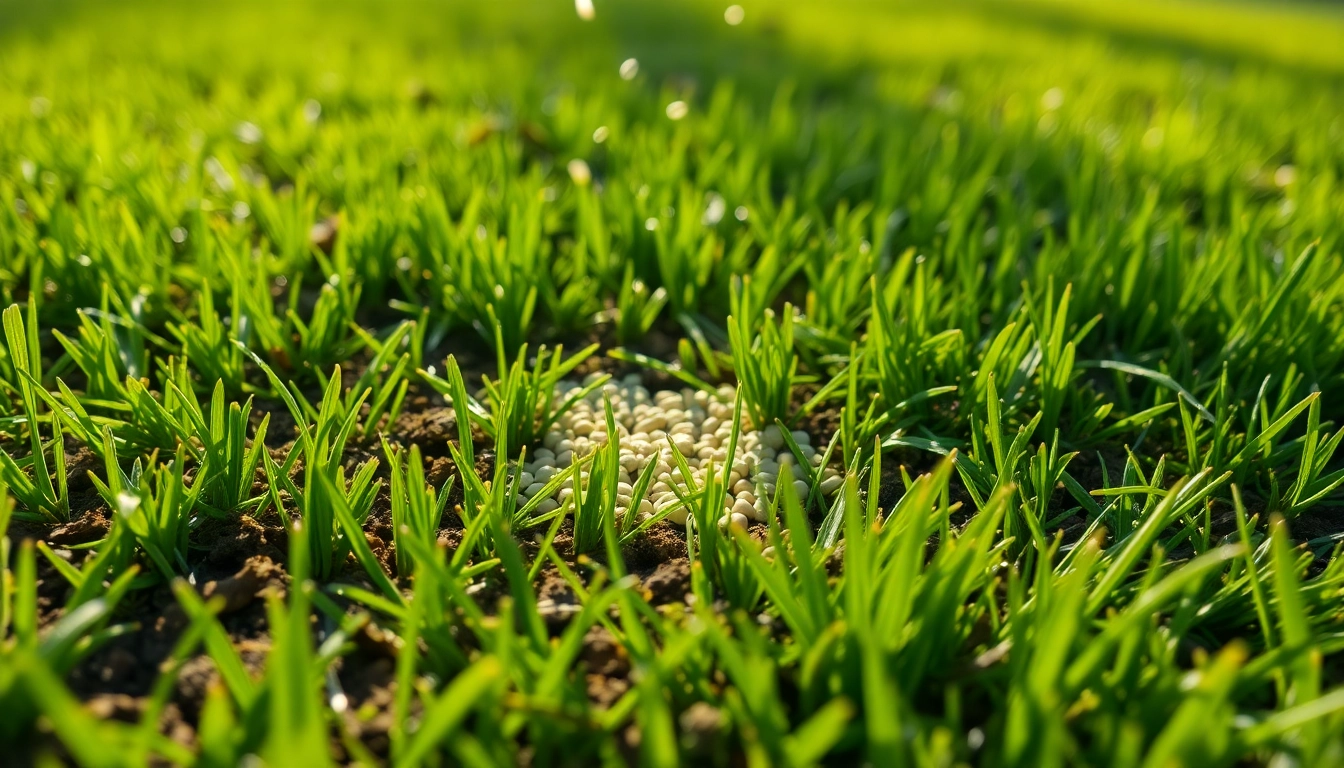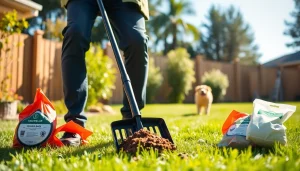Over Seeding Your Lawn: The Essential Guide to Thriving Grass

Understanding Over Seeding
What is Over Seeding?
Over seeding is the process of planting grass seed directly into the existing turf without the need to disrupt or remove the turf or soil underneath. This technique is particularly valuable for homeowners looking to improve their lawn’s health, aesthetics, and thickness without undergoing the extensive processes associated with re-sodding or laying new turf. By utilizing the over seeding method, you can effectively rejuvenate your lawn, fill in bare spots, and include new grass varieties that adapt better to environmental conditions.
Benefits of Over Seeding
Over seeding offers numerous advantages for lawn enthusiasts looking to enhance the quality and appearance of their grass. Some key benefits include:
- Improved Grass Density: By introducing new grass seed, you can increase the density of your lawn, which helps to crowd out weeds and protect against pests.
- Bare Spot Restoration: It provides a practical solution for patchy areas and thinning grass, ensuring a uniform, green surface.
- Enhanced Disease Resistance: Mixing in new grass seed can introduce varieties that are more resistant to common lawn diseases, improving your lawn’s overall resilience.
- Seasonal Adaptation: Over seeding allows you to adjust your lawn’s grass type to better suit changing environmental conditions, such as drought or heavy rainfall.
- Uniform Appearance: This practice can help restore color and consistency throughout your lawn, contributing to a healthier and more appealing landscape.
Common Misconceptions
Despite its benefits, many misconceptions surround the practice of over seeding. Here are a few of the most common:
- It’s Too Complicated: Some homeowners believe that over seeding requires advanced knowledge or expensive equipment. In reality, it can be performed easily with basic tools.
- Only for Thinning Lawns: While often used for lawns that have thinned out, over seeding can also benefit healthy lawns by boosting density and color.
- It’s Ineffective: There’s a belief that simply scattering seeds will not yield results. Proper preparation and care can result in successful germination and growth.
When to Over Seed Your Lawn
Best Seasons for Over Seeding
The timing of when to over seed is critical for achieving the best results. Generally, the best seasons for over seeding are:
- Late Summer to Early Fall: This is widely regarded as the ideal window, as temperatures and moisture levels are suitable for seed germination.
- Spring: If you missed the fall window, spring can also be a suitable time, particularly in warmer climates, as long as the risk of frost has passed.
Optimal Weather Conditions
Successful over seeding requires looking out for specific weather conditions:
- Optimal soil temperatures for germination range between 60°F and 75°F.
- After a period of rain or with consistent moisture helps the seeds establish contact with the soil.
- Days with partial sun and mild temperatures encourage the seed to sprout without overwhelming heat.
Signs Your Lawn Needs Over Seeding
Identifying the need for over seeding can be as simple as observing your lawn. Here are signs that indicate it’s time to overseed:
- Grass appears thin, patchy, or has bare spots.
- Weeds are beginning to take over or appear more frequently.
- The lawn shows signs of battling disease or pests.
- Your grass variety does not thrive in the current climatic conditions.
How to Over Seed Effectively
Preparing Your Lawn
The preparation phase is vital for successful over seeding. Follow these steps:
- Mow Your Lawn: Cut grass to a height of around 2 to 2.5 inches to allow seeds to see more available light and soil surface.
- Rake and Aerate: Raking the lawn can help remove debris, and aerating can enhance seed-to-soil contact, which is crucial for germination.
- Test Soil Health: Conduct a soil test to evaluate nutrient levels and pH; amend accordingly to ensure optimal growing conditions.
Selecting the Right Grass Seed
Selecting appropriate grass seed is essential for successful over seeding. Consider the following:
- Grass Type: Choose a variety that is well-suited for your region’s climate, such as cool-season or warm-season grasses.
- Quality of Seed: Purchase high-quality seed with a germination rate above 85% to ensure the best results.
- Blends and Mixtures: Utilizing blends can promote diversity in your lawn, improving resilience against diseases.
Techniques for Successful Over Seeding
Here’s how to effectively overseed your lawn:
- Broadcasting Seeds: Spread the seeds evenly using a broadcast spreader for uniform distribution.
- Watering: Moisten the soil before seeding and then continue to provide consistent watering, aiming for about 1 to 1.5 inches per week.
- Mulching: Incorporate a thin layer of mulch or topsoil to protect the seeds and retain moisture.
Aftercare for Over Seeding
Watering Guidelines
Proper watering is crucial after over seeding. Follow these guidelines:
- Water lightly every day for the first week, then gradually transition to every other day.
- Once seeds germinate and the grass reaches around 3 inches, shift to deep, infrequent watering to encourage deeper roots.
Fertilization Tips
The right nutrients are essential for growth:
- Using starter fertilizer can provide the necessary nutrients to new seedlings right from the onset.
- Seek products specifically labeled for new grass to avoid nutrient burn.
- Apply fertilizer according to soil test recommendations, respecting the needs of your grass type.
Monitoring Growth and Health
Regularly observe your lawn to ensure that your seeding efforts are successful:
- Check for even growth and healthy color.
- Look for any signs of disease or pests and manage them swiftly.
- Adjust watering and fertilization routines as your lawn matures.
Troubleshooting Over Seeding Issues
Dealing with Weeds
Weeds can be persistent adversaries. Here are some ways to manage them:
- Consider using pre-emergent weed control products after the first mow of your newly overseeded lawn to prevent weed growth.
- Hand-pulling or spot treating with herbicides can help remove weeds that establish amidst new grass.
Common Problems and Solutions
Here are some common problems faced during the over seeding process and their solutions:
- Low Germination Rates: Ensure seeds have proper soil contact, adequate moisture, and suitable temperatures for germination.
- Patchy Growth: This may require additional seeding in particularly thin areas or reevaluating soil health.
When to Seek Professional Help
Sometimes, it’s best to consult with a lawn care professional:
- If you have persistent problems with pests or diseases.
- When significant patchiness or thinning occurs and home remedies fail.
- If your lawn shows signs of poor soil health, such as compaction or imbalance in nutrients.







